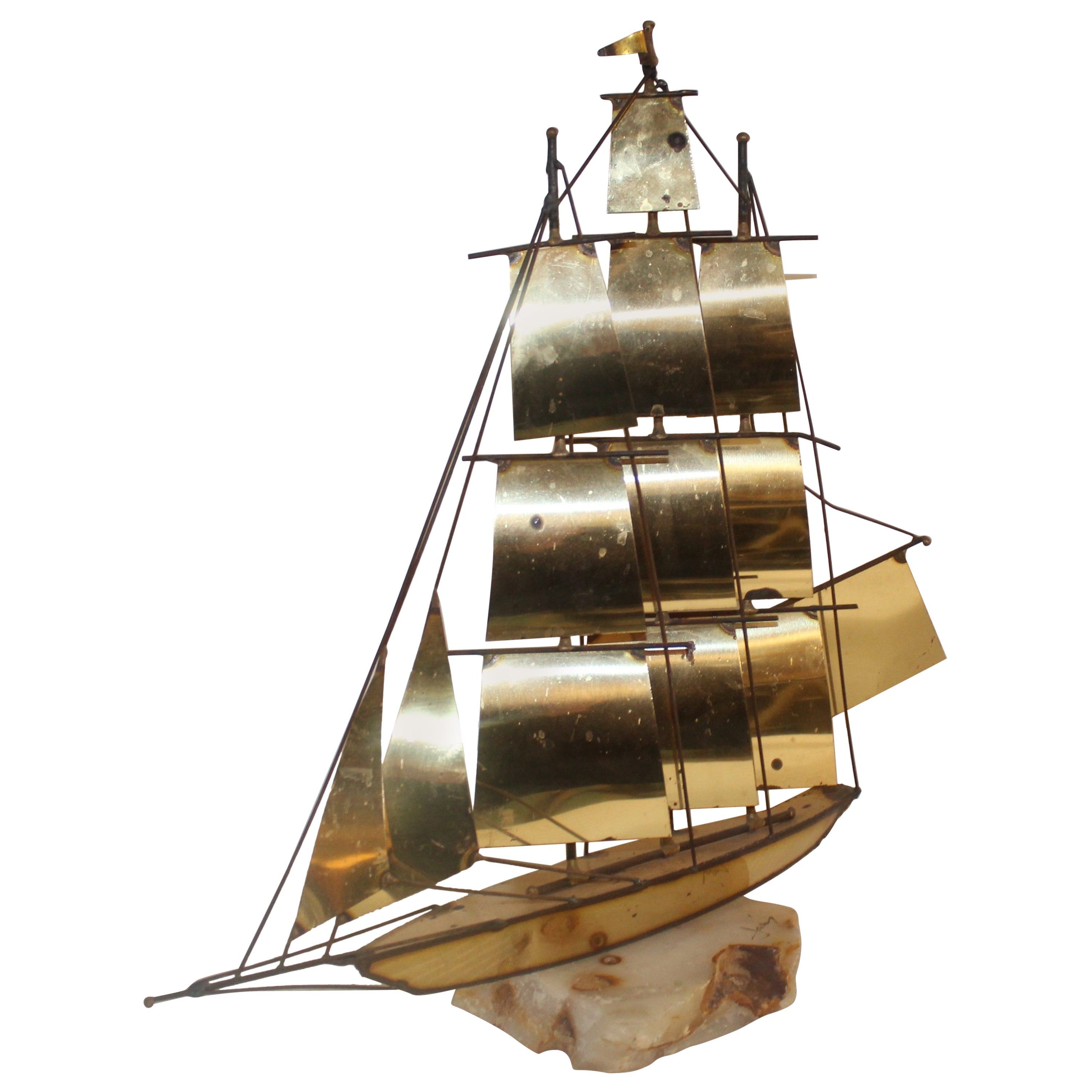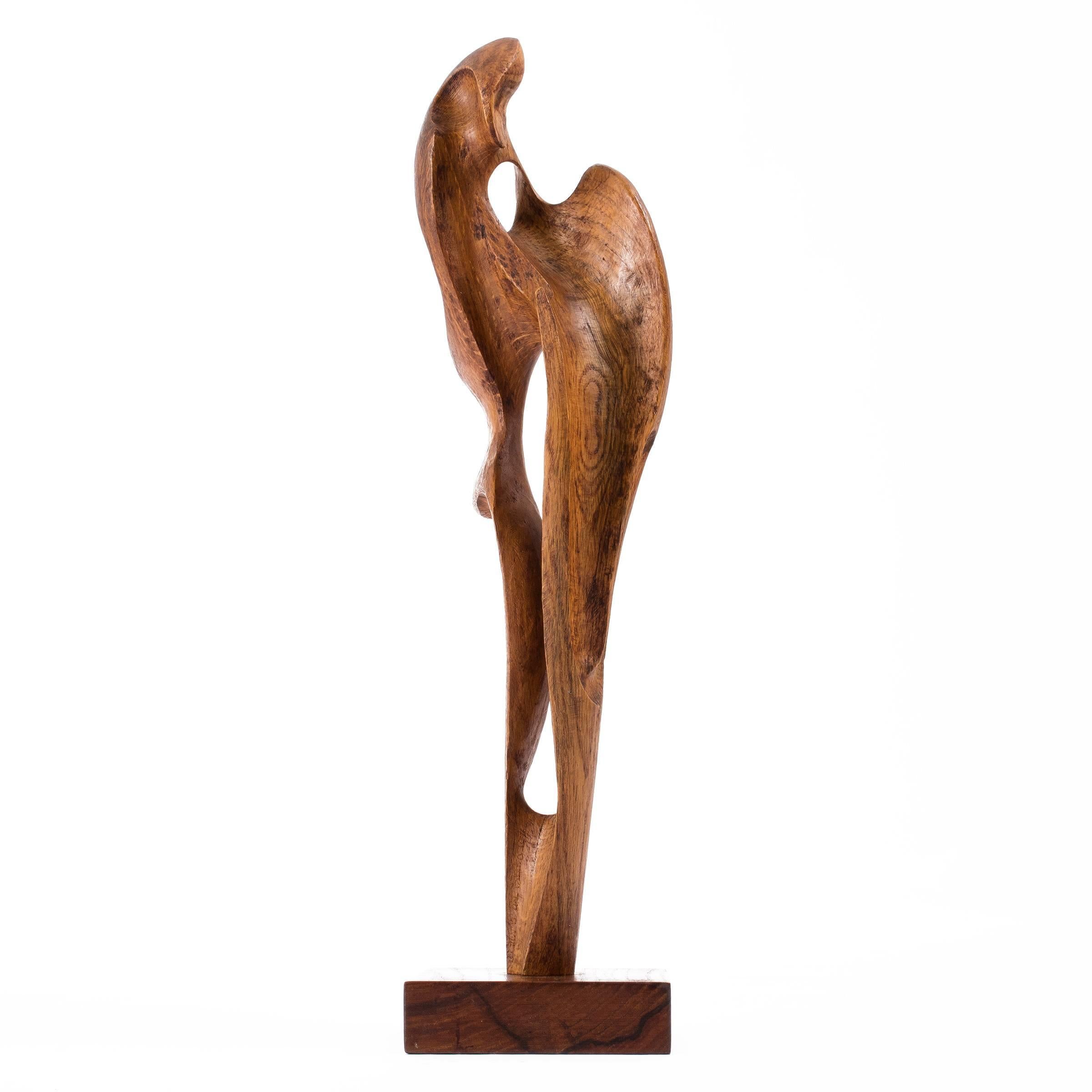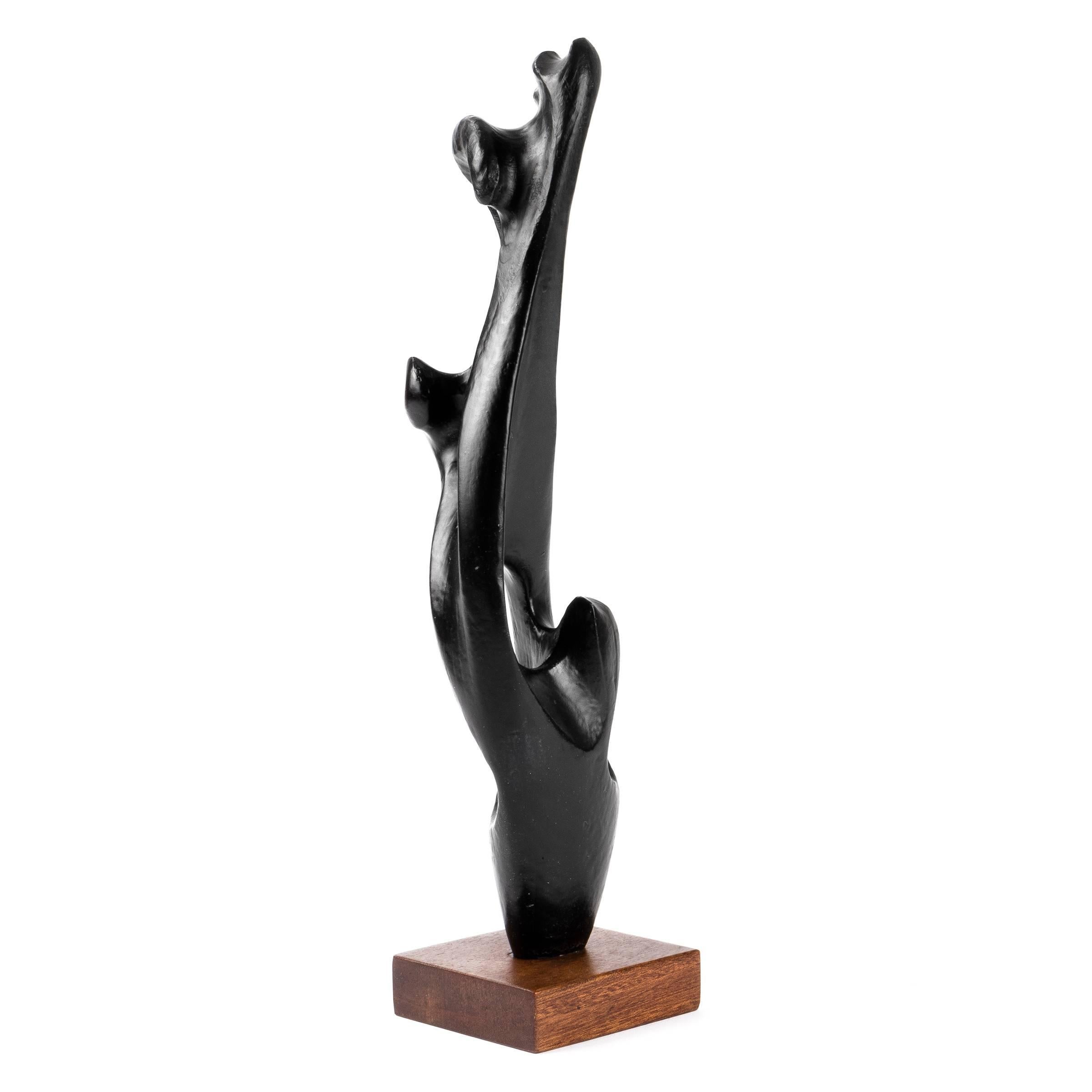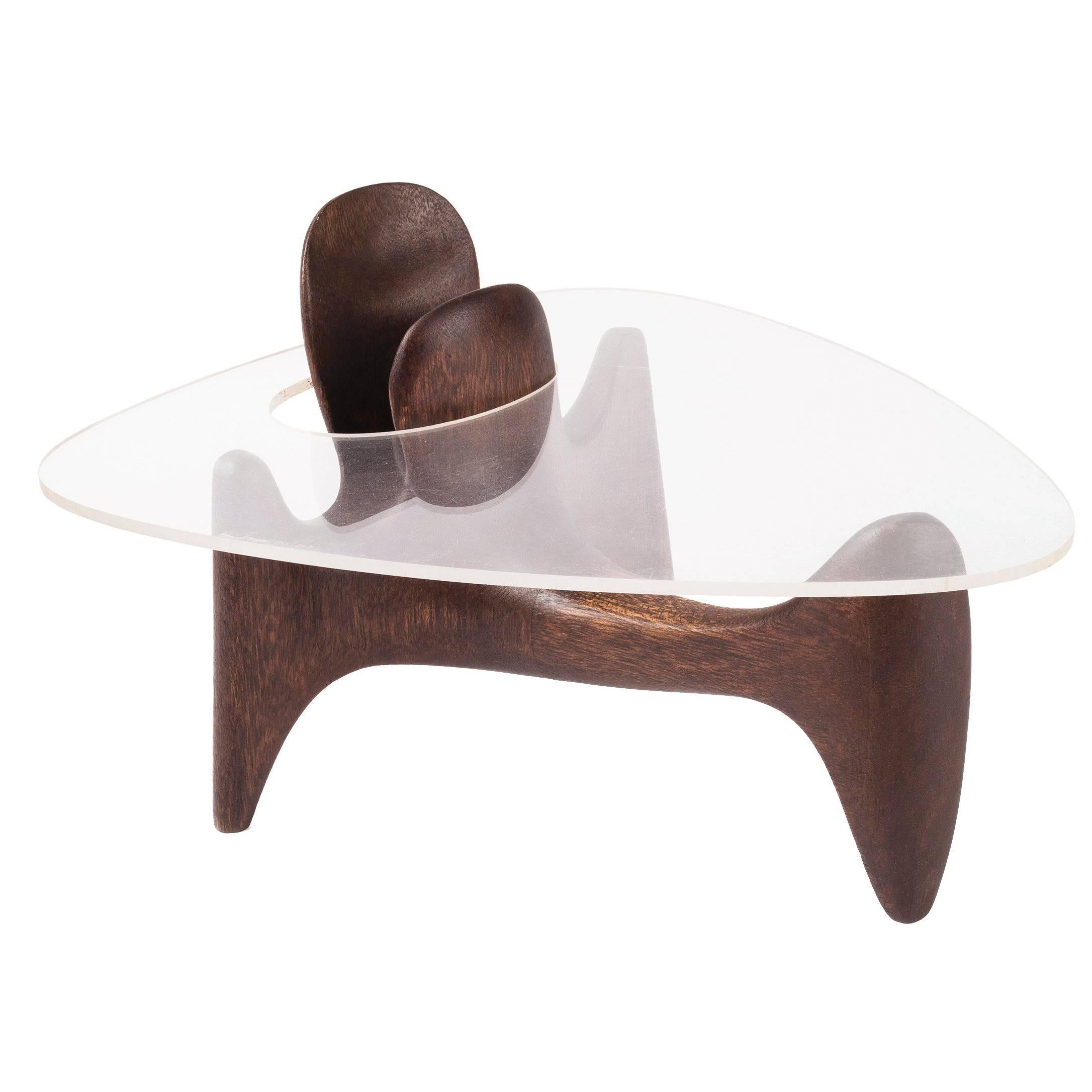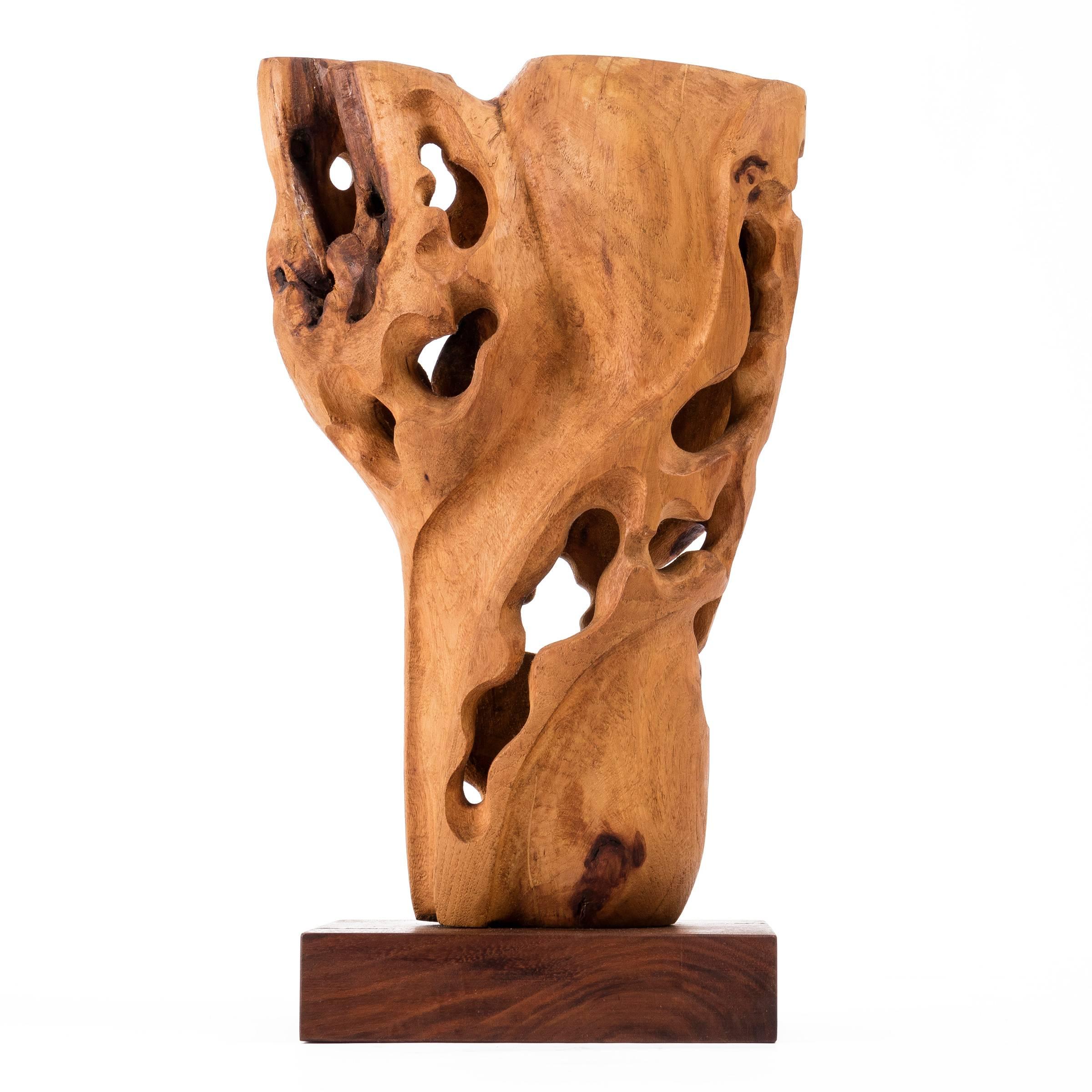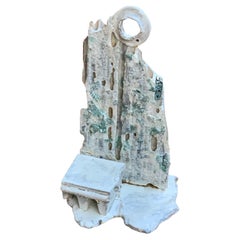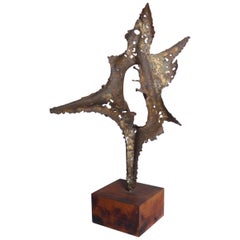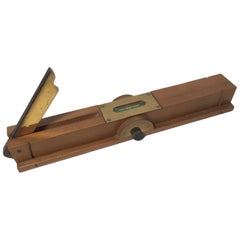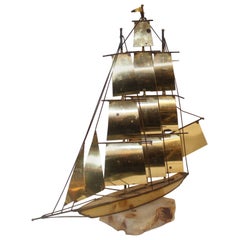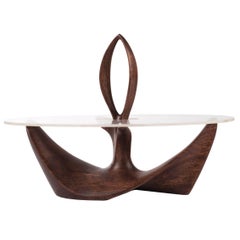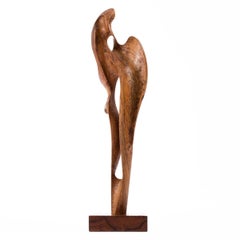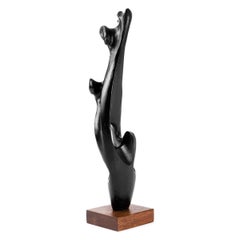Items Similar to Alabaster Sculpture by Mario Urbani, Volterra
Want more images or videos?
Request additional images or videos from the seller
1 of 15
Alabaster Sculpture by Mario Urbani, Volterra
About the Item
Alabaster sculpture designed and produced by Mario Urbani in 1930, Volterra. Single piece.
Biography
Urbani, Mario, architect, painter, artist, (Rome 1885 - Pesaro 1961), SIUSA
Mario Urbani studied at the School of Fine Arts in Rome and attended the Architecture Course, graduating in 1909. He worked for three years as a technical draughtsman in the State Railways, then attended the Higher School of Painting of Aristide Sartorio, with whom he made, in 1910-11, some frescoes in the Parliament Hall that celebrated the history of Italy, whose sketches were exhibited at the Venice Biennale in 1909. In the same years he worked alongside some Roman architects: Bazzani, Calderini, Garroni, Pazzi, Pio Piacentini, Pistrucci and Quaroni, contributing to the design of the pavilions for the Universal Exposition in Rome, in 1911, on the occasion of the Fiftieth Anniversary of Rome. In that year, after winning a national competition, he furnished the courthouse of Rome and also executed some frescoes, still extant, at the Viminale and the Ministry of Agriculture, Industry and Commerce inspired by De Carolis, artist present in Rome at the end of the nineteenth century, beginning of the twentieth century. Soon after Urbani began his career as a teacher in Sant'Angelo in Vado, at the Zuccari School of Art. In this town he made late decorations - liberty in a mill, a monument to the fallen, a large copper plate for the church of Santa Maria degli Angeli depicting a woman in classical clothes, on the model of ideal and ossequenti figures to the linear taste of Sartorio. From 1913 to 1927 he took over the direction, besides teaching, at the art schools of Bormio (Sondrio), Naples and Pesaro where he also realized, together with the pupils, works of decoration, furniture and architecture. He also made some small houses with external decorations. In 1924, also in Pesaro, he made the furniture for the office of the lawyer Ferri, the gonfalon of the Province and the gate of the Savings Bank (old house Chiaramonti). In 1925 he renovated the interior of the chapel of San Ubaldo reproducing the structural scheme and the fine style of a work that had been placed in that environment between 1910 and 1920, the Pesaro Altarpiece by Giovanni Bellini with its cimasa. He then, together with Mr. Camerini and G. Rifelli, executed the Benelli garage in via dell'Annunziata and the furniture for prof. Lupi’s home. In the following year he restored, with the reconstruction of most of the wood and paintings, the ceiling of the Metaurense hall of the former ducal palace of Pesaro. In 1927 he finished the bronzes for the architectural heads of the bridge over the Metauro, formed by four pillars in white stone, decorated at the corners of the base with eagles and, above, large braziers. The work had a celebratory function of the battle won by the Romans in 207 B.C. on the army of Asdrubale, recalled by an epigraph in Latin. In 1927 he restored the Grifoni palace (now Ridarelli-Nardini) at Sant'Angelo in Vado and then was forced to leave Pesaro because of his proud and independent character that had led him to clash with a representative of the regime. In 1933 he participated in the second national competition for the doors of the cathedral of Orvieto and would have been winner if the jury had not tried to favor another artist, as revealed in a letter to Urbani the archdeacon of the cathedral, Mons. Domenico Palazzetti. The competition has been suspended and the drawings of the Roman architect have been deposited in the cathedral museum. Also in 1930 the artist decorates and decorates the church of Sabaudia (Latina) with ceramics depicting a Pietà and the fourteen stations of the Via Crucis, with strong plastic reliefs and verists. For the municipality of Pesaro he also made a tour depicting the master Mascagni who was then entrusted with the work, in relief and chiseled silver, on the occasion of the performances of "Barber" and "Iris" directed by him in August 1931. In 1932 he participated in the competitions for the Palazzo del Comune and the headquarters of the Chamber of Commerce of Pesaro with neo-Renaissance projects. He also restored the square of Volterra, rebuilding some ancient architectural parts, now lost, and decorating them with scrap metal in fifteenth-century style. Finally he started a project for a palace of the world and continents, solved in a central building connected to others, arranged in concentric circles around and connected to the first with ramifications. This project was to participate in a competition, then cancelled, for the U.N. headquarters in 1947. The artist has also dedicated himself to painting, creating, during his life, self-portraits and portraits, capturing the characters in a romantic and somewhat decadent attitude. With greater vigor and realism, he represented his fellow Alpine soldiers on the front in the 1915-1918 war. It has therefore moved to stylize the forms as in "The four knights of the world" work performed between 1936 and 1938, which repeats the grandeur and hieraticity of the architecture of the time.The competition has been suspended and the drawings of the Roman architect have been deposited in the cathedral museum. Also in 1930 the artist decorates and decorates the church of Sabaudia (Latina) with ceramics depicting a Pietà and the fourteen stations of the Via Crucis, with strong plastic reliefs and verists. For the municipality of Pesaro he also made a tour depicting the master Mascagni who was then entrusted with the work, in relief and chiseled silver, on the occasion of the performances of "Barber" and "Iris" directed by him in August 1931. In 1932 he participated in the competitions for the Palazzo del Comune and the headquarters of the Chamber of Commerce of Pesaro with neo-Renaissance projects. He also restored the square of Volterra, rebuilding some ancient architectural parts, now lost, and decorating them with scrap metal in fifteenth-century style. Finally he started a project for a palace of the world and continents, solved in a central building connected to others, arranged in concentric circles around and connected to the first with ramifications. This project was to participate in a competition, then cancelled, for the U.N. headquarters in 1947. The artist has also dedicated himself to painting, creating, during his life, self-portraits and portraits, capturing the characters in a romantic and somewhat decadent attitude. With greater vigor and realism, he represented his fellow Alpine soldiers on the front in the 1915-1918 war. It has therefore moved to stylize the forms as in "The four knights of the world" work performed between 1936 and 1938, which repeats the grandeur and hieraticity of the architecture of the time.
- Dimensions:Height: 11.82 in (30 cm)Width: 5.91 in (15 cm)Depth: 2.76 in (7 cm)
- Style:Mid-Century Modern (Of the Period)
- Materials and Techniques:
- Place of Origin:
- Period:
- Date of Manufacture:1930
- Condition:
- Seller Location:Milan, IT
- Reference Number:1stDibs: LU2140343614262
About the Seller
5.0
Gold Seller
Premium sellers maintaining a 4.3+ rating and 24-hour response times
Established in 2006
1stDibs seller since 2016
320 sales on 1stDibs
Typical response time: 1 hour
- ShippingRetrieving quote...Shipping from: Asti, Italy
- Return Policy
Authenticity Guarantee
In the unlikely event there’s an issue with an item’s authenticity, contact us within 1 year for a full refund. DetailsMoney-Back Guarantee
If your item is not as described, is damaged in transit, or does not arrive, contact us within 7 days for a full refund. Details24-Hour Cancellation
You have a 24-hour grace period in which to reconsider your purchase, with no questions asked.Vetted Professional Sellers
Our world-class sellers must adhere to strict standards for service and quality, maintaining the integrity of our listings.Price-Match Guarantee
If you find that a seller listed the same item for a lower price elsewhere, we’ll match it.Trusted Global Delivery
Our best-in-class carrier network provides specialized shipping options worldwide, including custom delivery.More From This Seller
View AllBronze Sculpture by Carmelo Cappello
By Carmelo Cappello
Located in Milan, Italy
Bronze sculpture designed and produced by Carmelo Cappello in 1944.Single piece. Original signature and date.
Biography
Carmelo Cappello was born in 1912 in Italy.
Carmelo Cappello ...
Category
Vintage 1940s Italian Mid-Century Modern Figurative Sculptures
Materials
Bronze
Ceramic Sculpture by Marcello Fantoni
By Marcello Fantoni
Located in Milan, Italy
Ceramic sculpture by Marcello Fantoni, 1950.
Glazed ceramic. Single piece. Original signature. Cooking defect.
Biography
Marcello Fantoni was born in Florence on October 1, 1915. Gr...
Category
Vintage 1950s Italian Modern Abstract Sculptures
Materials
Ceramic
Beautiful Sculpture by Nino Franchina, Itlay
Located in Milan, Italy
Beautiful sculpture in iron and with wooden base designed by Nino Franchina, 1958, Italy. Unique piece.
Category
Antique 1850s Italian Modern Abstract Sculptures
Materials
Iron
Sculpture for Architects by Giò Pomodoro
By Gio Pomodoro
Located in Milan, Italy
Brass and wood sculpture "Livella" produced in 1970.
Numbered and signed Giò Pomodoro.
Produced for the company Torno S.P.A.
Biography
Giò Pomodoro: Brother of the famous sculptor A...
Category
Vintage 1970s Italian Modern Mobiles and Kinetic Sculptures
Materials
Brass
Sculpture for Architects by Giò Pomodoro
By Gio Pomodoro
Located in Milan, Italy
Plumb line sculpture in brass and wood produced in 1970.
Numbered and signed Giò Pomodoro.
Produced for the company Torno S.P.A.
Biography
Giò Pomodoro...
Category
Vintage 1970s Italian Modern Mobiles and Kinetic Sculptures
Materials
Brass
Ceramic Sculpture by Umberto Ghersi, Italy
By Umberto Ghersi
Located in Milan, Italy
Ceramic sculpture by Umberto Ghersi, 1960. Signed.
Biography:
Son of the ceramist Angelo and descendant of a family of Albisola majolica makers Umberto Ghersi, born in 1913 in Albis...
Category
Vintage 1970s Italian Modern Animal Sculptures
Materials
Ceramic
You May Also Like
Mario Jason Signed Sculpture
By Mario Jason
Located in Brooklyn, NY
Clipper ship sculpture made of welded brass sheets. Signed by artist Mario Jason and set on an onyx base.
Please confirm location NY or NJ
Category
Mid-20th Century Mid-Century Modern Mounted Objects
Materials
Onyx, Brass
Mario Dal Fabbro Sculpture
By Mario Dal Fabbro
Located in Chicago, IL
Mario Dal Fabbro No. 10
Signed Mario Dal Fabbro
Multi-disciplinary artist Mario Dal Fabbro was born in Cappella Maggiore, Italy in 1913. He trained in his family's furniture design shop prior to attending both the R. Superior Institute for Decorative and Industrial Arts in Venice as well as Magistero Artistico, graduating with high honors in 1937.
From the years of 1938-1948 Dal Fabbro immersed himself in furniture design and academia. Primarily, he designed furniture for both design houses and private clients. Del Fabbro participated in the Triennale de Milano competition in both 1939 and 1947 and won the Ganzatti Contest for 'Standardization of Furniture". During this period he also contributed to the Italian design publications Domus and Stile and the French magazine L'Architecture D'Aujourd'hui.
In 1948 Mario Dal Fabbro immigrated to America and began designing furniture for mass production, working for J.G. Furniture in New York and Quakertown, PA. During his years steady employ, he published Modern Furniture: Its Design And Construction in 1949 and contributed regularly to The New York Times and House and Garden. His subsequent publications spanned a little over the decade and included How to Build Modern Furniture (1951), How to Make Built-In Furniture (1955), and How to Make Children's Furniture and Play...
Category
Vintage 1970s American Mid-Century Modern Abstract Sculptures
Materials
Acrylic, Wood
Mario Dal Fabbro Sculpture
By Mario Dal Fabbro
Located in Chicago, IL
Mario Dal Fabbro Sculpture No. 16
1979
Signed, Mario Dal Fabbro, F.9
Multi-disciplinary artist Mario Dal Fabbro was born in Cappella Maggiore, Italy in 1913.
He trained in his ...
Category
20th Century American Mid-Century Modern Abstract Sculptures
Materials
Wood
Mario Dal Fabbro Sculpture
By Mario Dal Fabbro
Located in Chicago, IL
Mario Dal Fabbro Sculpture No. 15
Signed Mario Dal Fabbro
1982
Multi-disciplinary artist Mario Dal Fabbro was born in Cappella Maggiore, Italy in 1913.
He trained in his family...
Category
20th Century American Mid-Century Modern Abstract Sculptures
Materials
Wood
Mario Dal Fabbro Sculpture
By Mario Dal Fabbro
Located in Chicago, IL
Mario Dal Fabbro No. 11
Signed Mario Dal Fabbro, 1970, P.5
Multi-disciplinary artist Mario Dal Fabbro was born in Cappella Maggiore, Italy in 1913. He trained in his family's fur...
Category
Vintage 1970s American Mid-Century Modern Abstract Sculptures
Materials
Acrylic, Wood
Mario Dal Fabbro Sculpture
By Mario Dal Fabbro
Located in Chicago, IL
Mario Dal Fabbro sculpture No. 2
Signed Mario Dal Fabbro
1990
Multi-disciplinary artist Mario Dal Fabbro was born in Cappella Maggiore, Italy in 1913.
He trained in his family'...
Category
20th Century American Mid-Century Modern Abstract Sculptures
Materials
Wood
Recently Viewed
View AllMore Ways To Browse
Ceiling Sculpture
Used Furniture Santa Maria
Classical Pillar
Architectural Model Church
Bellini Stone
Stones Of Venice
Painting On Alabaster
Vintage Barber Furniture
Iris Plate
1931 Silver Plate
Cathedral Plates
Vintage Barber Art
Cathedral Model
Copper Eagle
Copper Soldiers
Italian Church Doors
Liberty Copper
Volterra Alabaster
